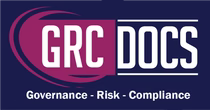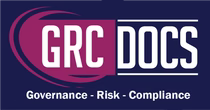SOC2 Incident Management Policy Template Download
Introduction
Incident management is a critical process that ensures an organization can detect, respond to, and recover from security incidents efficiently while minimizing impact. The Incident Management Policy provides a structured approach for preparing for incidents, detecting them early, containing their effects, eradicating threats, and learning from the experience to strengthen future resilience. By following this policy step-by-step, organizations can protect sensitive data, comply with regulations, maintain service continuity, and foster a proactive security culture.

Step-By-Step Guide For Using The Incident Management Policy
Step 1: Understand the Policy Scope
-
What to do: Identify who is covered staff, contractors, consultants, visitors, and third parties with system access.
-
Why it matters: This ensures everyone interacting with organizational systems knows their role in incident management.
-
Tip: Maintain a current contact list of all individuals covered by the policy.
Step 2: Assign Roles and Responsibilities
-
-
Management: Oversee implementation, allocate resources, and ensure compliance.
-
IT Department: Maintain security systems, provide technical response, and train employees.
-
Employees: Follow procedures, report incidents, and protect data.
-
-
Why it matters: Clear accountability ensures a quick, coordinated response during an incident.
Step 3: Prepare for Incidents
-
-
Develop a formal Incident Response Plan (IRP).
-
Set up an Incident Response Team (IRT) with trained members.
-
Conduct annual training and simulation exercises.
-
Create communication templates for internal and external notifications.
-
Maintain a classification system for incidents by type and severity.
-
Test and review the IRP at least once a year.
-
-
Why it matters: Preparation reduces response delays and confusion when incidents occur.
Step 4: Detect Incidents Early
-
-
Establish a Security Operations Center (SOC) or equivalent monitoring capability.
-
Encourage prompt reporting of suspicious activities.
-
Maintain a tiered escalation system for incident reports.
-
Involve stakeholders to provide supporting evidence or insights.
-
-
Why it matters: Early detection minimizes potential damage.
Step 5: Analyze and Contain Incidents
-
-
Confirm whether reported anomalies are actual security incidents.
-
Determine the scope, nature, and impact of the incident.
-
Engage experts if necessary for forensic analysis.
-
Use methods like log analysis, network monitoring, and interviews.
-
Isolate affected systems or users to prevent further spread.
-
Protect other systems and sensitive data.
-
Notify clients and external bodies only with CEO approval.
-
-
Why it matters: Effective containment prevents escalation and further harm.
Step 6: Eradicate the Threat
-
-
Remove malware and malicious files.
-
Apply patches, firewall adjustments, or other security measures.
-
Remove compromised systems from the network until safe.
-
Document vulnerabilities exploited in the attack.
-
-
Why it matters: Eradication ensures the threat cannot reoccur from the same source.
Step 7: Recover Operations
-
-
Restore systems from secure backups.
-
Return network access after ensuring systems are clean.
-
Verify normal business operations.
-
Preserve evidence for legal, regulatory, or internal review.
-
-
Why it matters: Fast recovery reduces downtime and operational disruption.
Step 8: Conduct Post-Incident Activities
-
-
Hold after-action reviews to capture lessons learned.
-
Archive documentation, including reports on suspected incidents.
-
Keep incident tracking data confidential and accessible only to authorized staff.
-
Identify long-term security improvements.
-
-
Why it matters: Learning from incidents strengthens defenses for the future.
Step 9: Manage Risks Proactively
-
-
Conduct bi-annual risk assessments focused on incident response readiness.
-
Use findings to update security controls and training.
-
Consider risks from both cyber threats and insider actions.
-
-
Why it matters: Proactive management prevents repeat incidents.

Step 10: Maintain Security Measures
-
-
Implement layered defenses: firewalls, intrusion detection, regular audits.
-
Maintain physical security controls for hardware and sensitive areas.
-
-
Why it matters: Multiple defenses reduce the risk of successful attacks.
Step 11: Control Access to Systems
-
-
Apply the least privilege principle for all accounts.
-
Keep detailed audit trails for sensitive system access.
-
Review access rights regularly.
-
-
Why it matters: Access control limits damage if accounts are compromised.
Step 12: Ensure Legal and Regulatory Compliance
-
-
Stay up to date with Australian and New Zealand telecommunications and security laws.
-
Train staff on these legal requirements.
-
-
Why it matters: Compliance avoids legal penalties and supports responsible incident handling.
Step 13: Provide Ongoing Training & Awareness
-
-
Include incident management training in onboarding.
-
Offer refresher sessions and awareness campaigns.
-
Cover latest trends in cyber threats and compliance changes.
-
-
Why it matters: A well-informed workforce can respond effectively to threats.
Step 14: Review and Update the Policy
-
-
Review at least annually or after significant incidents.
-
Update based on audit feedback, risk assessment findings, and regulatory changes.
-
-
Why it matters: An up-to-date policy remains effective and relevant.
Step 15: Handle Exceptions Properly
-
-
Document and approve deviations from the policy at a senior management level.
-
Ensure temporary measures are in place if exceptions are made.
-
-
Why it matters: Controlled exceptions prevent security lapses from becoming permanent weaknesses.
Step 16: Ensure Approval and Acknowledgment
-
-
Obtain formal board approval for the policy.
-
Require employees and contractors to sign an acknowledgment of understanding.
-
-
Why it matters: This formalizes commitment and accountability.
Conclusion- Key Takeaways
-
Preparation is critical: A tested IRP and trained IRT make all the difference in crisis situations.
-
Early detection saves time and money: The sooner incidents are found, the easier they are to contain.
-
Containment prevents escalation: Isolating threats limits damage to systems and data.
-
Eradication and recovery restore trust: Proper cleanup and restoration reassure stakeholders.
-
Post-incident reviews strengthen resilience: Learning from mistakes prevents repeat incidents.
-
Compliance is non-negotiable: Staying aligned with laws protects the organization legally and reputationally.
-
Continuous improvement keeps defenses strong: Regular reviews, training, and policy updates are essential.





